
The Tarawa class is a ship class of Landing Helicopter Assault (LHA) type amphibious assault ships operated by the United States Navy (USN). Five ships were built by Ingalls Shipbuilding between 1971 and 1980; another four ships were planned, but later canceled; instead they were joined by the Wasp-class amphibious assault ships.

A surface effect ship (SES) or sidewall hovercraft is a watercraft that has both an air cushion, like a hovercraft, and twin hulls, like a catamaran. When the air cushion is in use, a small portion of the twin hulls remains in the water. When the air cushion is turned off ("off-cushion" or "hull borne"), the full weight of the vessel is supported by the buoyancy of the twin hulls.

The Galicia class are two landing platform dock (LPD) ships in service with the Spanish Navy. Built by Navantia at Ferrol, their mission is to carry out amphibious warfare by transporting the bulk of the Infantería de Marina. These ships have both a large helicopter flight deck and a 885-square-metre (9,530 sq ft) well deck for large landing craft, as well as a 1,000-square-metre (11,000 sq ft) space for up to 33 main battle tanks.

Griffon Hoverwork Ltd (GHL) is a British hovercraft designer and manufacturer.
Fajr F.3 is an Iranian full composite four-seat training/touring aircraft built by Fajr Aviation & Composites Industry. First flown in 1995, production commenced in 2001 after the aircraft was certified to JAR-23 standard. It has been speculated that it is a copy/modification of the Cirrus SR-20.

The Zubr class, Soviet designation Project 1232.2, is a class of Soviet-designed air-cushioned landing craft (LCAC). The name "Zubr" is Russian for the European bison. This class of military hovercraft is, as of 2023 the world's largest hovercraft, with a standard full load displacement of 555 tons. The hovercraft was designed to sealift amphibious assault units from equipped/non-equipped vessels to non-equipped shores, as well as to transport and plant naval mines.
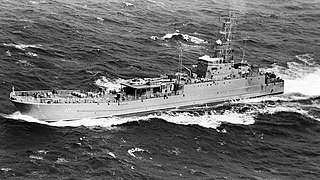
The Polnocny -class ships are amphibious warfare vessels. They were designed in Poland, in cooperation with the Soviet Navy and were built in Poland between 1967 and 2002. They now serve in several different navies, and some have been converted to civilian use. The name comes from the Stocznia Północna shipyard at Gdańsk, where they were built. 107 were built by 1986. In 2002, one ship of a modernised design NS-722 was built in Gdynia for Yemen.
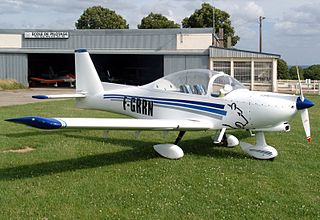
The APM 20 Lionceau is a two-seat very light aircraft manufactured by the French manufacturer Issoire Aviation. Despite its classic appearance, it is entirely built from composite materials, especially carbon fibers.
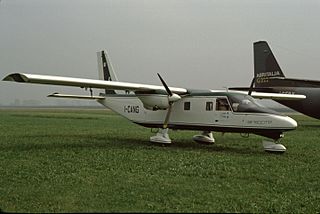
The Vulcanair SF.600 Canguro was a feederliner developed in Italy in the late 1970s. Despite a number of attempts to put the aircraft into series production, only a small number were ever built. The Canguro was a high-wing cantilever monoplane of conventional configuration with a fuselage of rectangular cross-section and a high-set tail. The tricycle undercarriage was not retractable, and its main units were carried on sponsons on the fuselage sides. SIAI Marchetti provided funding towards the construction of the prototype, and constructed this aircraft at the former Aviamilano plant. After flight testing proved positive, the type was put on sale, but failed to attract buyers in any number, even when the original piston engines were exchanged for turboprops and retractable undercarriage was offered as an option.

The Italair F.20 Pegaso was a twin-engine utility aircraft designed by Stelio Frati and built in Italy in 1971.
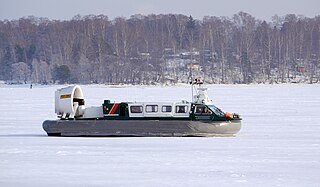
The Slingsby SAH 2200 hovercraft is a small military hovercraft designed and originally produced by the Slingsby Amphibious Hovercraft Company at their facility in Kirkbymoorside, England.
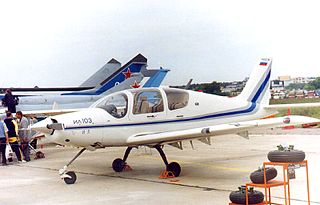
The Ilyushin Il-103 is a single-engine, low-wing training aircraft developed by the Ilyushin Design Bureau that started in 1990 in the Soviet Union. The aircraft is now produced in Russia. It was the first Russian aircraft to achieve Federal Aviation Administration certification in 1998, it is for sale in the United States.

CCGS Siyay is a Canadian Coast Guard Type 400 BHC AP1-88/400 hovercraft based in Richmond, British Columbia. The vessel was ordered in 1996 and launched and entered service in 1998. The hovercraft is predominantly used for servicing navigational aids and search and rescue duties.

CCGS Sipu Muin is a Canadian Coast Guard Type 400 AP1-88 air cushion vehicle (ACV) or hovercraft based at CCG Hovercraft Base Trois-Rivières in Trois-Rivières, Quebec. The vessel was launched and completed in 1998 and entered service the same year. Sipu Main is predominantly used for icebreaking, search and rescue, and for servicing navigational aids in the Lower Saint Lawrence River and St. Lawrence Seaway.
CCGS Waban-Aki was a Canadian Coast Guard hovercraft based at CCG Hovercraft Base Trois-Rivières in Trois-Rivières, Quebec. It was a Type 200 AP1-88 air-cushioned vehicle (ACV) and sister ship to CCGS Sipu Muin. Its name is derived from the First Nations term Wabanaki meaning "people of the dawn". The hovercraft decommissioned in 2010 and was replaced by CCGS Mamilossa. The primary missions of Waban-Aki were icebreaking and performing search and rescue missions in the Saint Lawrence River and its navigable tributaries. Occasionally Waban-Aki performed navigation aid maintenance.
CCGS Penac was a Canadian Coast Guard AP1-88/100 air cushioned vehicle (ACV) or hovercraft and was based at CCG Hovercraft Base Richmond, British Columbia. The primary missions of Penac was search and rescue off the British Columbia Coast. The vessel was initially constructed in 1984 by the British Hovercraft Corporation for use as a passenger vessel in Copenhagen, Denmark as Lommen with Scandinavian Airlines and renamed Liv Viking just before the service began. Sold in 1997 after a bridge eliminated the vessel's need, the hovercraft was sold to Hovertravel for service on the Solent. However, the ACV never entered service and was acquired by the Canadian Coast Guard in 2004. Renamed Penac, the hovercraft remained in service until 2017.

Griffon/GRSE 8000 TD class is a series of hovercraft designed by Griffon Hovercraft Ltd, Southampton, England. It has proven to be one of Griffon's most commercially successful hovercraft.

The Landing Craft Air Cushion (Light), or LCAC(L), is a small amphibious hovercraft able to transverse both land and water. Like all amphibious landing craft in the Royal Navy, they were operated by the Royal Marines to transport troops or equipment from ship to shore during an amphibious landing.

The Akar class is a series of two replenishment oilers and fleet support ships, designed and built for service in the Turkish Navy. The lead ship of the class, TCG Akar, was constructed in 1982–1983 and entered service in 1987. The second ship, TCG Yarbay Kudret Güngör, was constructed in 1993–1994 and entered service in 1995. Both ships were constructed in Turkey, though Yarbay Kudret Güngör was the first ship built for the Turkish Navy by a private shipyard. Both vessels remain in service.
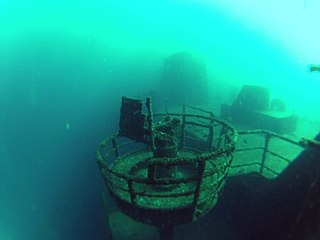
Al Munassir was an amphibious warfare vessel operated by the Royal Navy of Oman. It was purchased to enable the kingdom to respond to threats to the strategically important Musandam Governorate. The vessel was launched in 1978 and, after decommissioning, was sunk as an artificial reef in 2003. It is now a popular diving site.

















